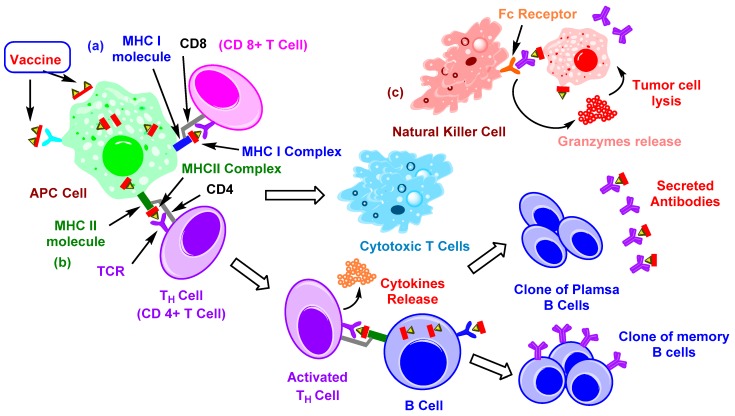Figure 1.
Illustration of immune response to cancer cells. (a) Vaccine constructs containing specific antigen(s) get internalized inside antigen-presenting cells (APCs) via endocytosis or binding with specific receptors. While inside APCs, immunogens get proteolyzed by immune proteasomes and divided into several peptide fragments containing antigen(s). If those fragments get loaded onto MHC I then they form MHC I complexes. The resulting complex is transported to the surface so that it can be recognized by CD8+ T-cells. Activated T-cells proliferate to give cytotoxic T-cells [23,27], (b) fragments binding with MHC II molecules result in an MHC II complex, which is then transported to the cell surface, activating CD4+ T-cells. Resulting activated cells can further activate B-cells, which present similar antigenic fragments with MHC II. Activated B-cells differentiate into clones of plasma and memory B-cells [23,27], (c) antibody-dependent cellular cytotoxicity (ADCC) occurs when IgG antibodies bind with tumor cells, presenting the target specific antigen(s), then Fc receptors of natural killer (NK) cells can recognize them and release granzymes (perforin, proteases, etc.), which causes lysis of tumor cells [28].

